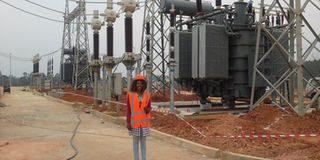Uganda’s electricity exports to Kenya up

Reduction. There has been an increase in Uganda’s power exports to Kenya due to a reduction in tariffs. FILE PHOTO
Kenya has increased its electricity imports from Uganda by 67 per cent on the back of a 50 per cent tariff reduction.
According to Business Daily, a Nairobi based newspaper, Kenya is importing more power because Uganda reduced the tariff cost from Shs787.3 to Shs501.
“The Energy ministry attributes the sharp growth to a 50 per cent tariff cut that Uganda offered Kenya from June. The Muhoroni generator which largely supplies the region is Shs1,252.6 per unit compared to Uganda’s which was Shs787.3 per unit before June and is now Shs501 per unit,” the Business Daily quoted Kenya’s Energy Cabinet Secretary Charles Keter.
Mr Keter also revealed that the tariff is expected to reduce further to Shs357.8 at the end of October, adding that this, being hydro power: “Gives us [Kenya] a lot of stability in the region even as demand continues to rise.”
Uganda, through, Uganda Electricity Transmission Company Limited (UETCL), which is in charge of bulk electricity supplies, imports and exports power to different East African countries including Kenya, which mainly requests for support to its western grid.
Kenya’s western region is periodically affected by lack of stable supply from base-load sources such as hydro and geothermal due to lack of a transmission line from Olkaria where the country generates half of its electricity.
Mr Valentine Katabira, the UETCL deputy chief executive officer, confirmed Uganda has been reducing the cost of electricity it exports to Kenya because of a reduction in generation costs.
“The high tariff we were having with Kenya before was based mostly on thermal power because you had Electromaxx and Jacobsen. The minute you are running expensive plants, the tariffs are also high,” he said adding: “We were supposed to have gone directly to Shs357.8 but because Isimba Dam had not yet come online, we reduced to Shs501.”
UETCL also renegotiated the power purchase agreement with Kenya as a demand increasing strategy amid a growing generation surplus.
Uganda currently has a generation capacity of above 1,200 megawatts but consumption stands at 650 MW at peak demand.
According to Business Daily, Kenya bought 153.06 gigawatt hours of electricity from Uganda between January to August 2019.
However, Electricity Regulatory Authority (ERA), whose mandate is to determine the price of electricity, said the cost of electricity exports even when reduced are still higher than what Ugandans pay.
“When Uganda sells to Tanzania it is at a wholesale price. When Umeme sells to you as a user, it is a retail price. However, if you compare the amount of money at which we sell to Kenya Power and Lighting Company and Umeme, Umeme’s is cheaper,” Mr Julius Wandera, the ERA communication manager, said adding power sales generated from exports help subsidise the cost of electricity Ugandans pay.
Comparisons and regional plans
Uganda power cheaper:
Umeme’s bulk supply tariff, which is the cost at which UETCL sells power to Umeme, according to figures from ERA is 6.8 cents (Shs252.2) compared to Kenya’s Shs501 per unit.
Bulk supply tariff recovers the cost of generation and transmission. Uganda exports power to Kenya, Tanzania, Rwanda and DR Congo.
East African Power Pool:
To create demand for the excess power in East Africa, governments from the region are creating a transmission network linking them into a power pool.
It is from the pool that different countries will sell power to each other, which explains Uganda’s competitive strategy by reducing the cost of power.




